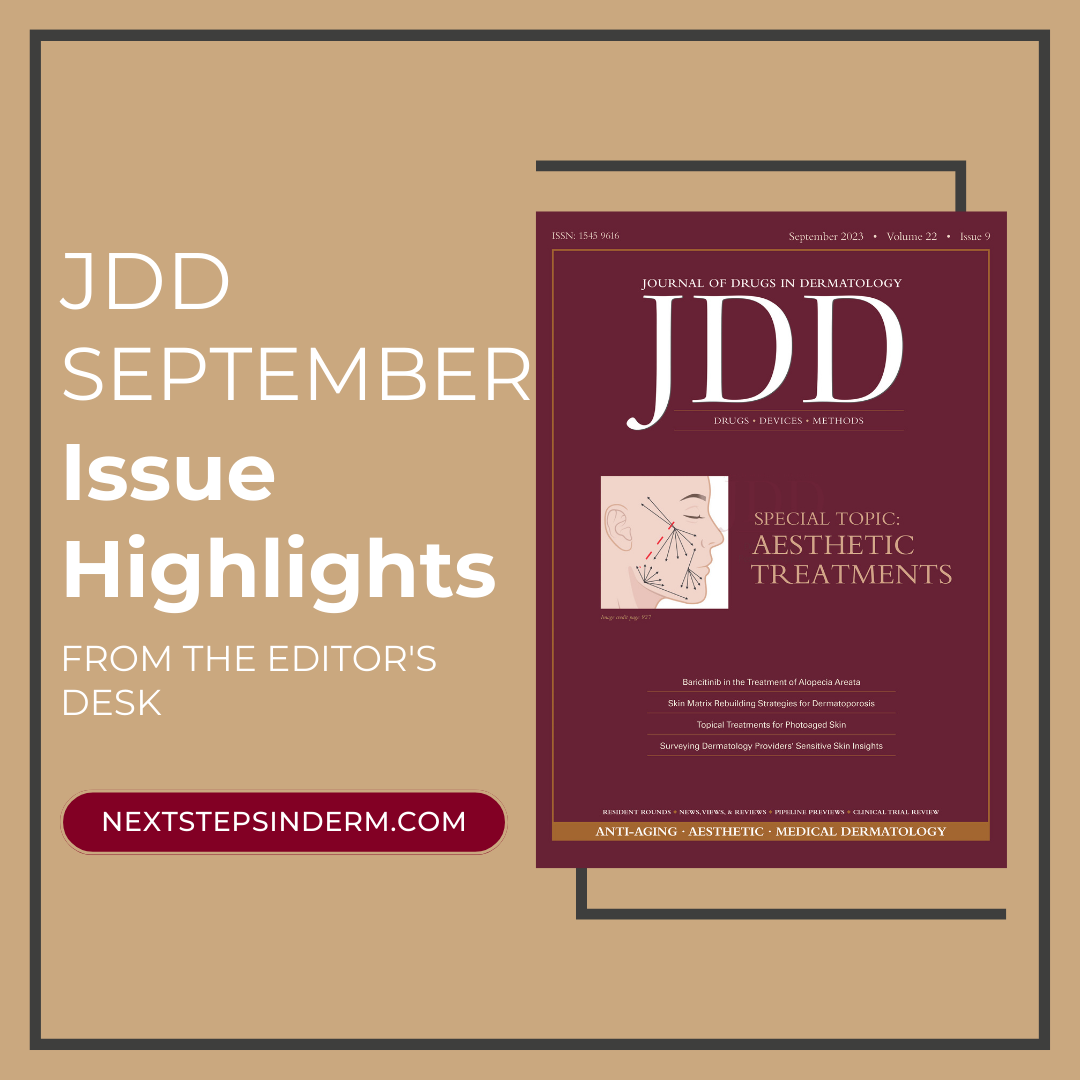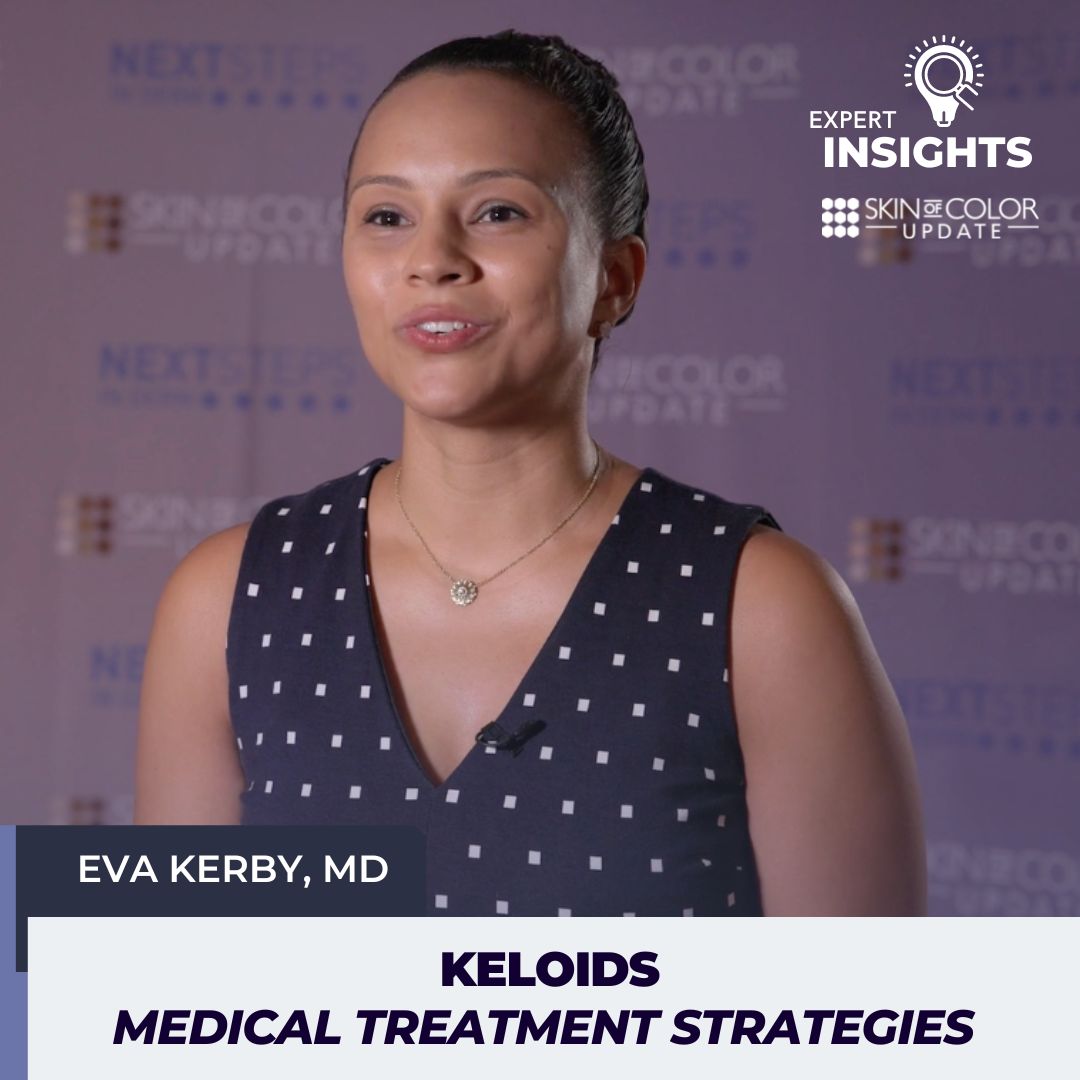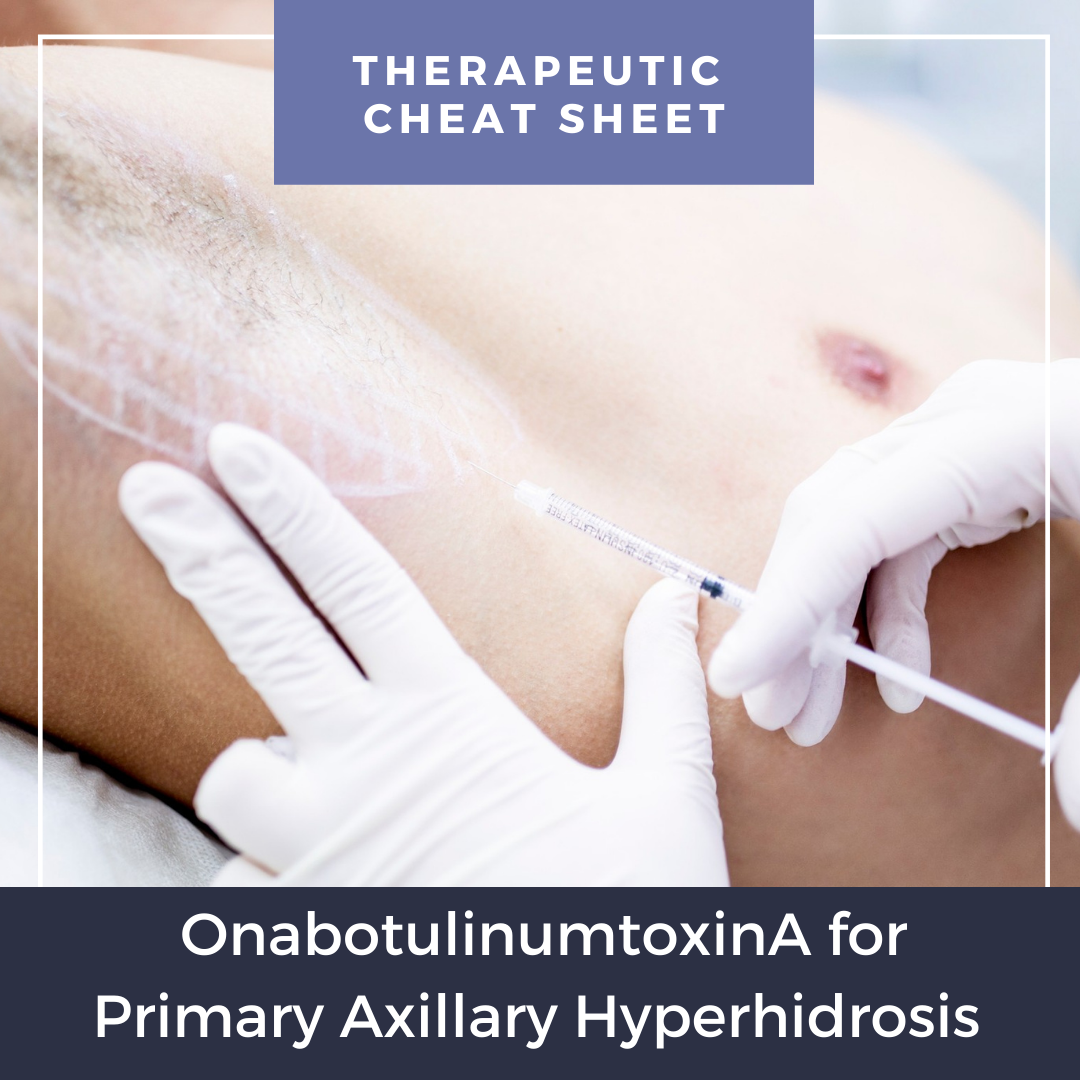JDD September 2023 Issue Highlights | Special Focus: Aesthetic Treatments
180651806518065 With a special focus on aesthetic treatments, check out highlights from the September issue of the Journal of Drugs in Dermatology (JDD) straight from the Editor’s desk:
A Randomized Control Trial Comparing the Efficacy of Platelet-Rich Plasma and 5% Topical Minoxidil for the Treatment of Androgenetic Alopecia suggests that PRP therapy demonstrates a higher efficacy compared to minoxidil for t …
With a special focus on aesthetic treatments, check out highlights from the September issue of the Journal of Drugs in Dermatology (JDD) straight from the Editor’s desk:
A Randomized Control Trial Comparing the Efficacy of Platelet-Rich Plasma and 5% Topical Minoxidil for the Treatment of Androgenetic Alopecia suggests that PRP therapy demonstrates a higher efficacy compared to minoxidil for t …
 With a special focus on aesthetic treatments, check out highlights from the September issue of the Journal of Drugs in Dermatology (JDD) straight from the Editor’s desk:
A Randomized Control Trial Comparing the Efficacy of Platelet-Rich Plasma and 5% Topical Minoxidil for the Treatment of Androgenetic Alopecia suggests that PRP therapy demonstrates a higher efficacy compared to minoxidil for t …
With a special focus on aesthetic treatments, check out highlights from the September issue of the Journal of Drugs in Dermatology (JDD) straight from the Editor’s desk:
A Randomized Control Trial Comparing the Efficacy of Platelet-Rich Plasma and 5% Topical Minoxidil for the Treatment of Androgenetic Alopecia suggests that PRP therapy demonstrates a higher efficacy compared to minoxidil for t … Continue reading "JDD September 2023 Issue Highlights | Special Focus: Aesthetic Treatments"


 Next Steps in Derm, in partnership with ODAC Dermatology, Aesthetic & Surgical Conference, interviewed Dr. Hadar Lev-Tov, associate professor of clinical dermatology and cutaneous surgery at the University of Miami Miller School of Medicine. Watch as Dr. Lev-Tov shares some of the treatments that are emerging in wound healing. Find out why a beta blocker may be the most well-kept secret in he …
Next Steps in Derm, in partnership with ODAC Dermatology, Aesthetic & Surgical Conference, interviewed Dr. Hadar Lev-Tov, associate professor of clinical dermatology and cutaneous surgery at the University of Miami Miller School of Medicine. Watch as Dr. Lev-Tov shares some of the treatments that are emerging in wound healing. Find out why a beta blocker may be the most well-kept secret in he …  Next Steps in Derm, in partnership with Skin of Color Update, interviewed Dr. Eva Kerby, assistant professor of clinical dermatology at Weill Cornell Medical College. Dr. Kerby shares her preferred medical treatment options for keloids, and why it’s important to set treatment expectations with patients. Watch as Dr. Kerby shares tips for good injection technique and how to treat larger, nodul …
Next Steps in Derm, in partnership with Skin of Color Update, interviewed Dr. Eva Kerby, assistant professor of clinical dermatology at Weill Cornell Medical College. Dr. Kerby shares her preferred medical treatment options for keloids, and why it’s important to set treatment expectations with patients. Watch as Dr. Kerby shares tips for good injection technique and how to treat larger, nodul …  As the shown wound heals and matures, which cell type is most important for wound contraction?
A. Macrophages
B. Neutrophils
C. Fibroblasts
D. Myofibroblasts
E. Endothelial cells
To find out the correct answer and read the explanation, click here.
Brought to you by our brand partner Derm In-Review. A product of SanovaWorks.
…
As the shown wound heals and matures, which cell type is most important for wound contraction?
A. Macrophages
B. Neutrophils
C. Fibroblasts
D. Myofibroblasts
E. Endothelial cells
To find out the correct answer and read the explanation, click here.
Brought to you by our brand partner Derm In-Review. A product of SanovaWorks.
…  Primary hyperhidrosis (PHH) is a dermatologic condition characterized by overactivity of eccrine glands resulting in excessive sweating primarily affecting the palms, soles, axillae, and craniofacial area. PHH is not caused by other conditions, whereas secondary hyperhidrosis is caused by an underlying medical condition or medication side effect. Botulinum toxin injections are often used as second …
Primary hyperhidrosis (PHH) is a dermatologic condition characterized by overactivity of eccrine glands resulting in excessive sweating primarily affecting the palms, soles, axillae, and craniofacial area. PHH is not caused by other conditions, whereas secondary hyperhidrosis is caused by an underlying medical condition or medication side effect. Botulinum toxin injections are often used as second …